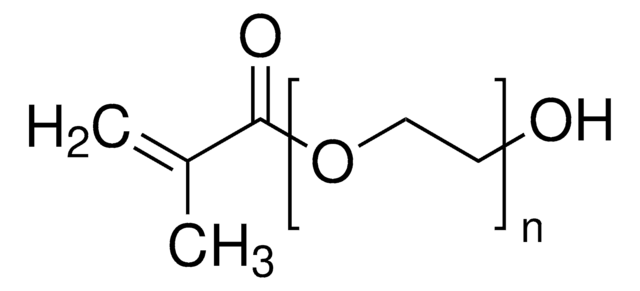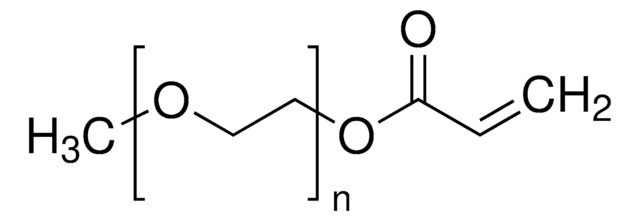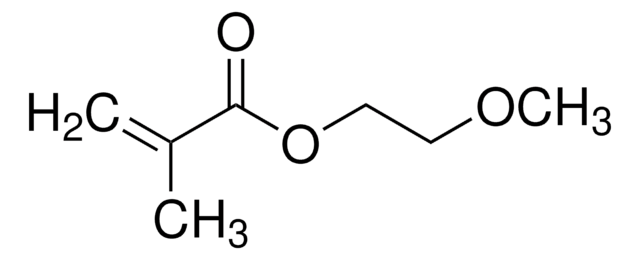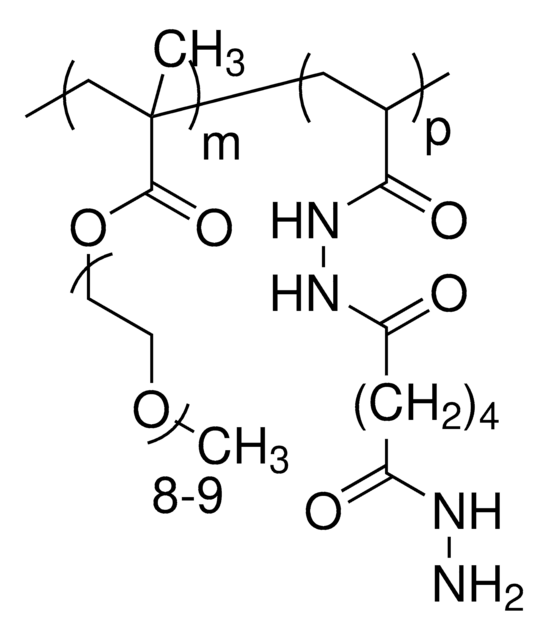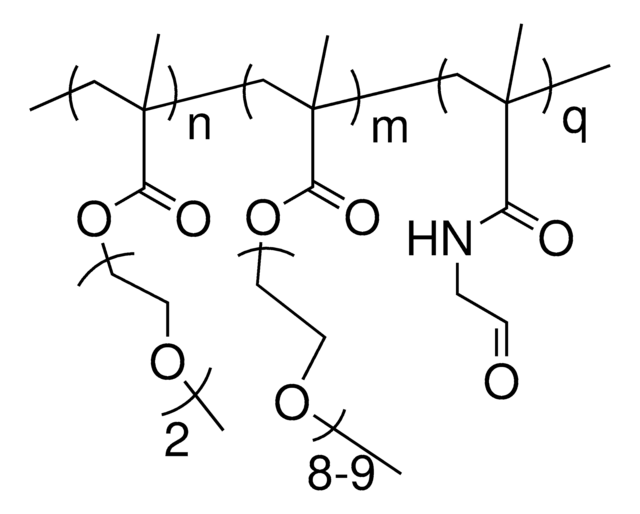447935
Poly(ethylene glycol) methyl ether methacrylate
average Mn 300, methacrylate, methoxy, 300 ppm BHT as inhibitor, 100 ppm MEHQ as inhibitor
Sinonimo/i:
Polyethylene glycol, Methoxy PEG methacrylate, Methoxy poly(ethylene glycol) monomethacrylate, Poly(ethylene glycol) monomethyl ether monomethacrylate
About This Item
Prodotti consigliati
product name
Poly(ethylene glycol) methyl ether methacrylate, average Mn 300, contains 300 ppm BHT as inhibitor, 100 ppm MEHQ as inhibitor
PM
average Mn 300
Livello qualitativo
contiene
100 ppm MEHQ as inhibitor
300 ppm BHT as inhibitor
Impiego in reazioni chimiche
reagent type: chemical modification reagent
reaction type: Polymerization Reactions
Indice di rifrazione
n20/D 1.452
Densità
1.05 g/mL at 25 °C
Estremità Ω
methacrylate
Estremità α
methoxy
Architettura del polimero
shape: linear
functionality: monofunctional
Temperatura di conservazione
2-8°C
Cerchi prodotti simili? Visita Guida al confronto tra prodotti
Descrizione generale
Applicazioni
Avvertenze
Warning
Indicazioni di pericolo
Consigli di prudenza
Classi di pericolo
Eye Irrit. 2 - Skin Irrit. 2 - Skin Sens. 1 - STOT SE 3
Organi bersaglio
Respiratory system
Codice della classe di stoccaggio
10 - Combustible liquids
Classe di pericolosità dell'acqua (WGK)
WGK 1
Punto d’infiammabilità (°F)
Not applicable
Punto d’infiammabilità (°C)
Not applicable
Dispositivi di protezione individuale
dust mask type N95 (US), Eyeshields, Faceshields, Gloves
Scegli una delle versioni più recenti:
Possiedi già questo prodotto?
I documenti relativi ai prodotti acquistati recentemente sono disponibili nell’Archivio dei documenti.
I clienti hanno visto anche
Articoli
The manufacture of monomers for use in ophthalmic applications is driven by the need for higher purity, improved reliability of manufacturing supply, but ultimately by the need for the increased comfort, convenience, and safety of contact lens wearers. Daily wear contact lenses have the potential to fill this need for many customers; however, their widespread use is constrained by higher costs compared to weekly- or monthly-based lenses. New approaches that improve cost structure and result in higher quality raw materials are needed to help make contact lenses more affordable and accelerate growth of the contact lens market.
Devising biomaterial scaffolds that are capable of recapitulating critical aspects of the complex extracellular nature of living tissues in a threedimensional (3D) fashion is a challenging requirement in the field of tissue engineering and regenerative medicine.
Il team dei nostri ricercatori vanta grande esperienza in tutte le aree della ricerca quali Life Science, scienza dei materiali, sintesi chimica, cromatografia, discipline analitiche, ecc..
Contatta l'Assistenza Tecnica.
